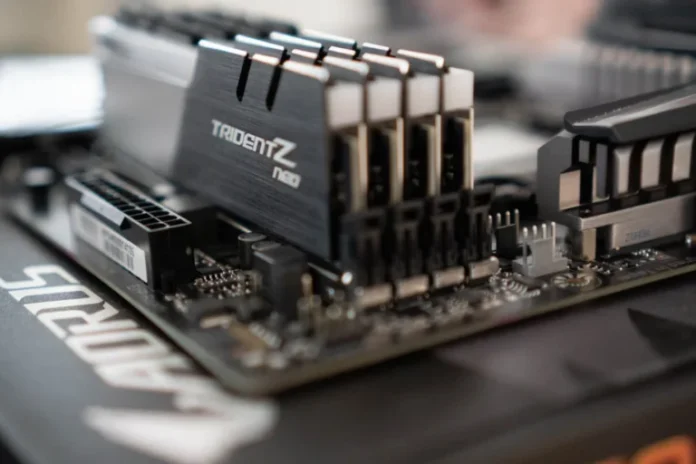Random Access Memory (RAM) is a component that allows a computer to store data for a short period of time and access it quickly. The computer loads a program or requested document into memory from storage, and then accesses each unit of information in RAM. Many operations are memory-dependent, so the amount of RAM available is critical to your system’s performance. RAM can be thought of as the short-term memory for your computer. It allows your system to access data much faster than even through an SSD. If you have multiple applications running at the same time, you will need more RAM than if you only use a few applications at a time.
Inside the computer, memory works in conjunction with the processor and storage (hard disk drive or SSD) and is used to access and use data. For example, a word processing program will not depend much on RAM because of its low productivity requirements. However, a detailed Excel spreadsheet or Photoshop requires as much RAM as you can spare. The same goes for games. In many cases, you need to allocate extra RAM for games, especially if you use a lot of mods. This applies to super demanding games that need more RAM.
In modern computers, RAM is usually used in multiples of 4. Motherboards often use what is called dual-channel memory, which means that you need one type of RAM, either 4, 8, or 16 slots. There is no upper limit to the amount of RAM other than what the motherboard can support, although there is a limit to how much you can reasonably use.
So, in this article, we are going to tell you how to allocate more RAM for a particular app on your PC or laptop.
How to allow Windows 10 to allocate more RAM
The easiest way to improve performance on all computers is to allow Windows to use as much RAM as necessary for productivity. If you want to do that, you have to follow these steps:
- First of all, right click on “This PC” and select the “Properties” section;
- Then, go to the “Advanced system settings” at the right side of the screen;
- After that, click the top one “Settings” menu;
- Next, under the “Visual Effects” tab, choose the “Adjust for best performance” option.
Once this is done, click the “Apply” button. The changes will take effect after your computer restarts. This setting allows Windows to allocate RAM as needed so that programs run as smoothly as possible.
How to allocate more RAM for a particular app using Task Manager
If you want to allocate more RAM for a particular app using Task Manager, you have to follow these steps:
- First of all, open Task Manager. You can do this using keyboard shortcut “Ctrl + Shift + Esc”;
- Then, click on the “Details” tab;
- After that, right-click on the executable application you want to set up;
- Next, click “Set priority” and select “High”;
- Finally, confirm changes by clicking “Change priority”.
Once you’ve completed these steps, your computer will give priority to this program over other applications that may be running at the same time.
How to allocate more RAM for a particular app using Windows context menu
If you want to allocate more RAM for a particular app using the Windows context menu, you have to follow these steps:
- First of all, right click on the icon of the app you want to set up and select “Properties”;
- Then, go to the “Shortcut” tab and select the “Target” field;
- After that, paste “-disk-cache-size=1073741824” at the end of the existing entry and click “OK”.
Once you’ve completed these steps, 1 GB (1073741824 bytes) of RAM cache will be allocated for the appropriate app. You have also to be aware that you can select any value of RAM cache. But don’t experiment too much, cause you are unlikely to damage your PC or laptop by allocating too much or too little RAM cache for any app. It can cause a program to crash or become inappropriate for use under certain conditions.




